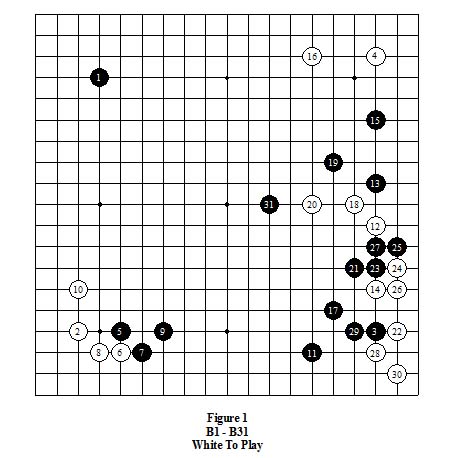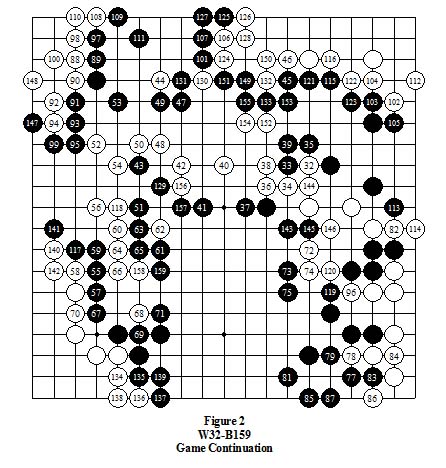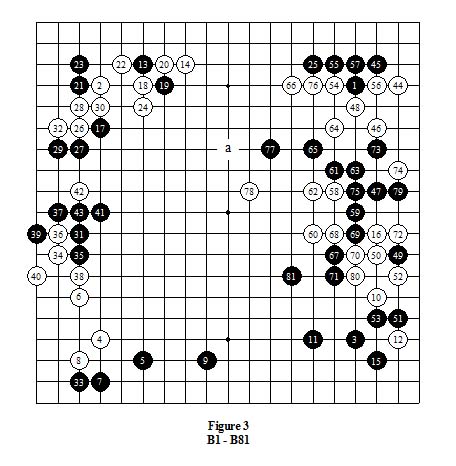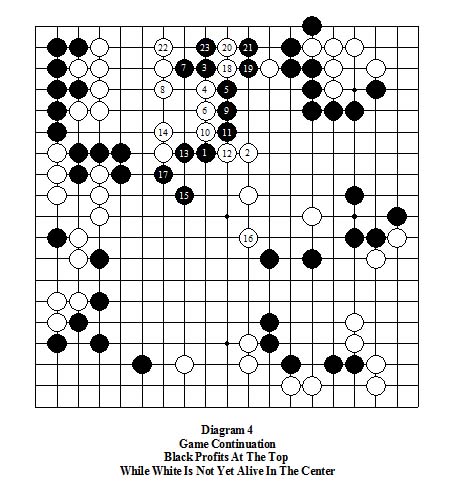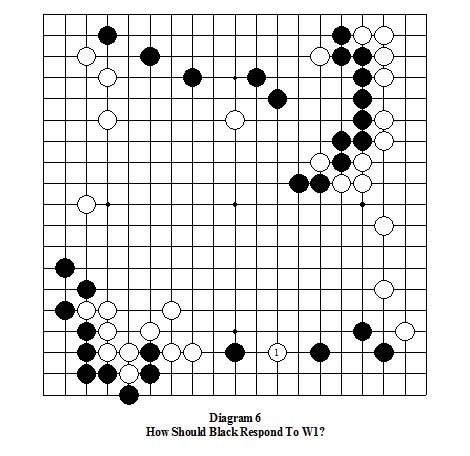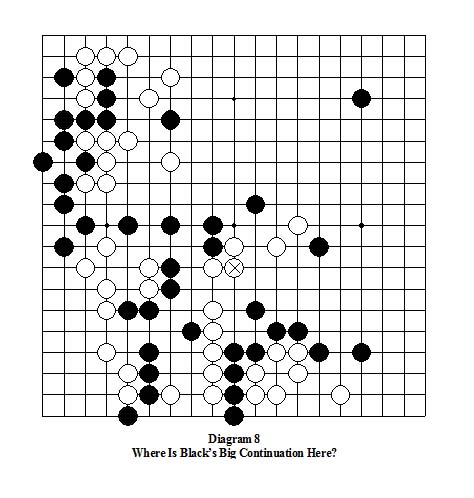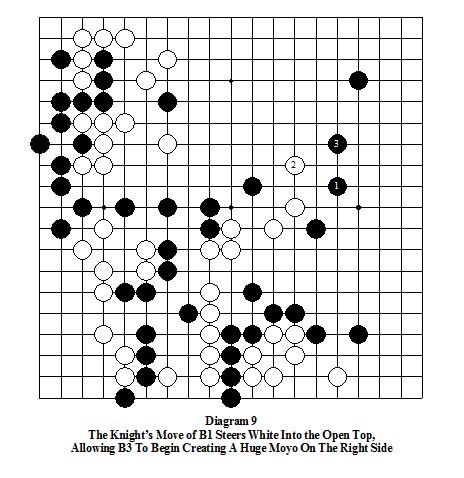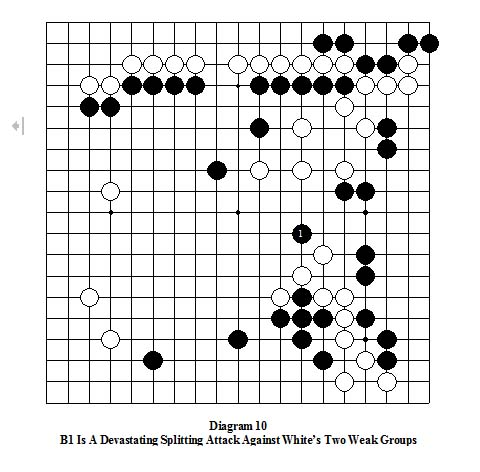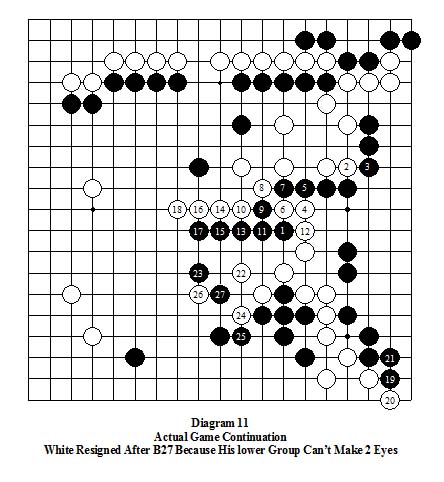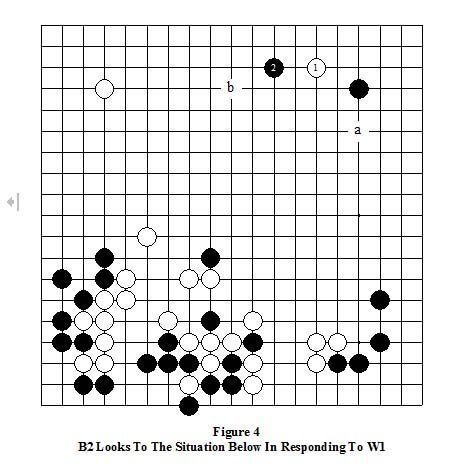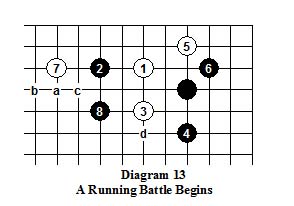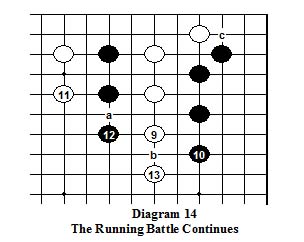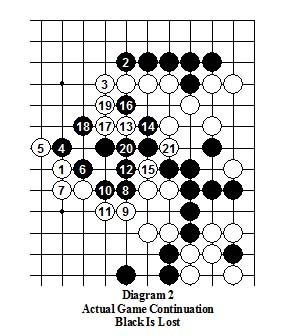
|
|
Diagram 2 Instead of capping, the diagonal move of W1 here is even better, because it precludes that Ko possibility.
Next, Black thought it prudent to strengthen (and expand) his corner with B2 before answering W1.
Unfortunately that turned out badly because B2 induced W3, which then contributed importantly to White’s attack on the weak Black group below.
After the B2, W3 exchange, Black had time to attach with B4, and at that point he must have believed that he was going to survive White’s attack relatively unscathed.
But that expectation was dashed when the peep of W13 and the following W15 set up the later cut of W21, trapping the 8 Blacks on the right and leaving the rest of the big weak
Black group fleeing with only 1 eye.
Only a few moves later Black was forced to resign.
|
